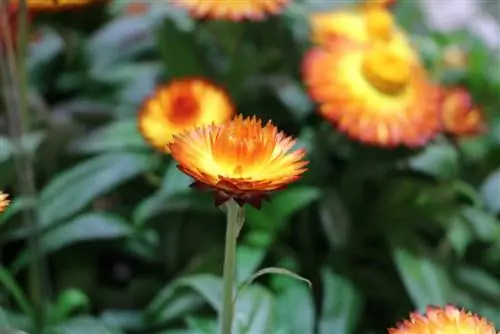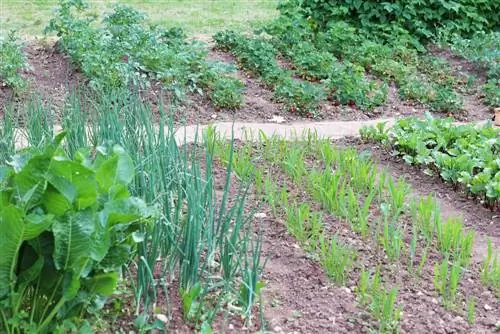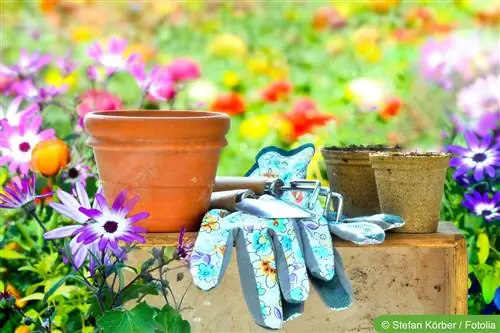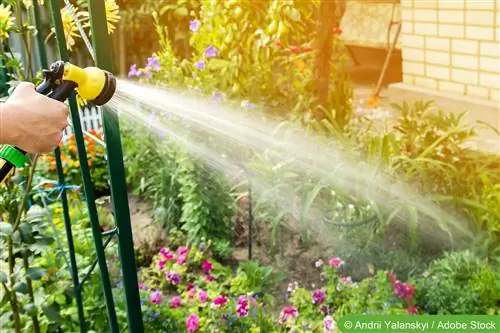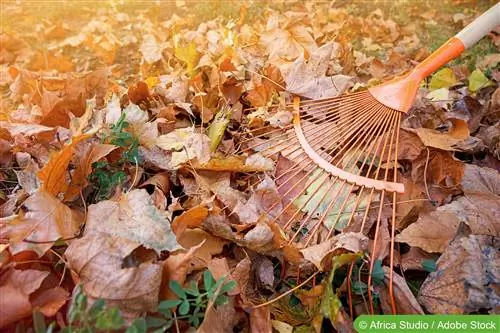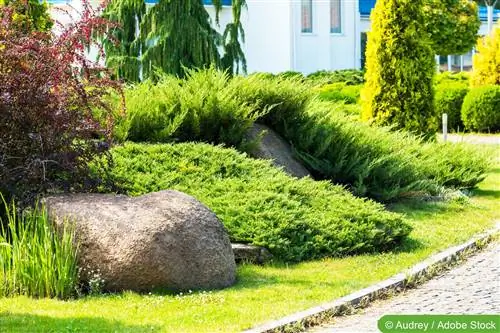- Author admin [email protected].
- Public 2023-12-17 03:39.
- Last modified 2025-01-24 12:45.
Easy, it spreads a good mood in the bed and on the balcony. The garden strawflower adorns the cottage garden with its clever charisma and inspires the imagination to create magnificent dry bouquets. After tireless flowering from May to October, it will be happy to come back next year after a frost-free winter in the pot. Given these many talents, the little jack-of-all-trades has already made it to the throne of 'Balcony Plant of the Year'. These care tips reveal what is important in the successful cultivation of a Helichrysum bracteatum.
Location and substrate
The garden strawflower spreads its cheerful, colorful floral flair wherever it is exposed to full sunlight for most of the day. It likes to raise its rustling flower heads towards the sky in air-drenched positions, where it can dry off quickly after a summer rain. Varieties that grow to a height of 100 centimeters enjoy the support of a garden fence or a sunny wall. Short-growing varieties not only display their floral splendor in the classic cottage garden, but also fit harmoniously into rock and gravel gardens, as long as the soil here is not too poor.
- Full sunny location
- Humose, nutrient-rich soil
- Well-drained soil with light moisture content
Planted immediately in the bed, the lifespan of a Helichrysum bracteatum is limited to one summer. Since Mother Nature has endowed it with the potential for perennial cultivation, prudent hobby gardeners prefer to plant the summer flower in pots and balcony boxes. Here it thrives in standard potting soil, which is ideally optimized with a little sand or perlite.
Watering and fertilizing
Another mainstay of the successful care of a garden strawflower is the proper supply of water and nutrients. While their thirst is limited, their need for food is at a comparatively high level. How to handle it correctly:
- Strawflowers prefer mild humidity
- Water moderately when the substrate surface is dry
- Pour the water directly onto the root area
- Protect from targeted bombardment with ice-cold water from the hose
- Fertilize weekly from May to October with 2 ml of liquid fertilizer per liter of irrigation water
- Regularly work compost and horn shavings into the soil in the bed
In order to meet the nutrient requirements without having to worry about them every week, slow-release fertilizers serve as a sensible alternative. These depot preparations are available in the form of sticks, granules or small cones. These fertilizers provide a garden strawflower with all the important minerals and trace elements for 6-8 weeks, so that three doses per season are sufficient.
Tip:
Repeated cleaning of withered flowers and leaves promotes the growth of new, lush inflorescences.
Cutting
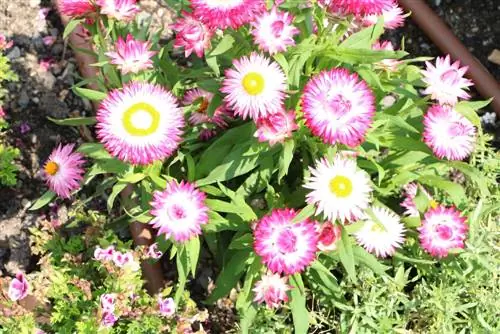
If you have intended the straw flowers to function as dried flowers in a colorful bouquet or arrangement, the stems are cut when the flower heads are just opening. These unfold fully as they dry. If, on the other hand, your Helichrysum bracteatum has the task of beautifying the garden for as long as possible, they are only cut close to the ground when they have completely faded, or when the first frost has put an end to the flower dream.
Wintering
Cultivated in a planter, there is a good chance that the garden strawflower will overwinter in order to repeat its flowering splendor next year. The following aspects are relevant:
- Put away the bucket or balcony box in good time before the first forest
- The winter quarters are bright and cool with temperatures of 5-10 degrees Celsius
- An unheated stairwell, a bedroom or the frost-free, bright garage is ideal
- Do not let the substrate dry out during wintering
- There is no fertilization during this phase
Leave the wilted inflorescences on the plant throughout the winter. Only shortly before new growth next spring do you cut the stems close to the ground.
Propagate
Sowing is considered an uncomplicated method of propagating garden strawflowers. You have the choice between growing indoors in March or direct sowing in May. Specimens grown behind glass score points with a considerable growth advantage, which gives Helichrysum bracteatum a robust resistance to diseases and pests. Both procedures are explained in more detail below:
Sowing behind glass
In March the local lighting conditions have brightened enough that sowing the seeds can be started. In the weeks and months before, it was so dark even at the south window of the house that seedlings quickly died because they were desperately reaching for every ray of light. This is how sowing works:
- Fill a seed tray with peat sand, coconut fibers, perlite or commercial seed soil
- Mix the fine seeds with sand and scatter them
- Sift over with substrate or vermiculite about 1 centimeter thick
- Moisten with a fine spray from the spray bottle
Placed in a bright, warm window seat, germination occurs within 14-21 days at 15-18 degrees Celsius. There is no need for a cover in the form of glass or foil here, as a warm, humid microclimate is unfavorable here. As soon as the seed container becomes too crowded, the weakest seedlings are sorted out. If all the seedlings have developed splendidly, it may be worth separating them into individual pots. Placed in lightly fertilized pricking soil, you can continue to care for your pupils until they move into the bed after the ice saints.
Direct sowing
Where sowing indoors does not seem practical, the focus is on directly sowing seeds in the bed. The days and weeks after the Ice Saints in mid-May are a good choice of date. This is how the workflow works:
- At the selected location, loosen the bed soil to a depth of 20 centimeters
- Remove roots, stones and weeds from the soil until it is finely crumbly
- Spread a 5 centimeter high layer of sifted compost and work it in with a rake
- Spread the strawflower seeds widely, rake in and spray gently
To protect the seeds, spread out a close-meshed net. Before, during and after germination, prudent hobby gardeners keep sprouting weeds under control so that they do not overgrow the tender seedlings. Once the plants have developed to a height of 5 centimeters, the weaker straw flowers are sorted out. A planting distance of 20 centimeters is considered ideal.
Drying
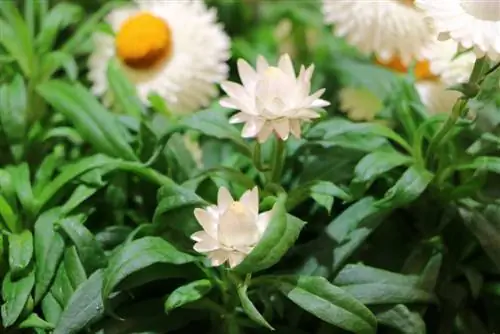
As a dried flower, the garden strawflower retains its summer-light appearance for many years. The cheapest and easiest method is air drying. To do this, cut the flowers that are not yet fully open in the afternoon when the morning dew has cleared. Loosely tied with raffia, hang the flowers in small bunches upside down in a warm, dry place. The darker it is here, the less the colors remain. During the drying process, tighten the tape a little as the stems lose moisture. The durability is optimized if you spray the dried flowers with hair lacquer at the end of the process. An elegant way to dry strawflowers is to use one part glycerin and two parts water. Place the Helichrysum bracteatum in a vase for 2-4 weeks in this mixture, which is distributed throughout the stems, flowers and leaves. The result is slightly shimmering and flexible dried flowers.
Conclusion
No one can escape your cheerful charm. The garden strawflower impresses with its multi-faceted talents, such as an almost infinitely long flowering period, undemanding care and easy propagation. Not to forget the decorative value as a dried flower in magnificent farmer's bouquets and arrangements. There is a place in every garden for this colorful all-rounder, as long as it is sunny enough. The joy of the colorful flower heads does not have to be limited to one year, because frost-free overwintering in the pot is definitely possible.

